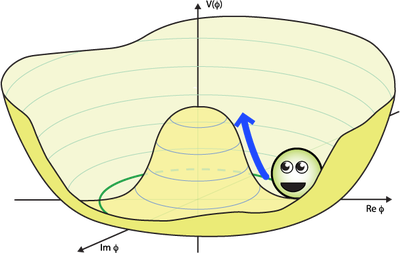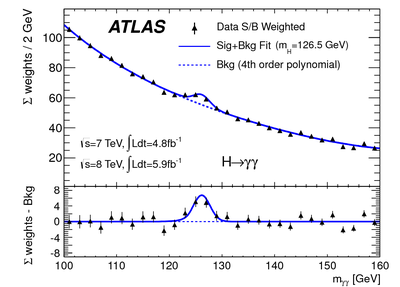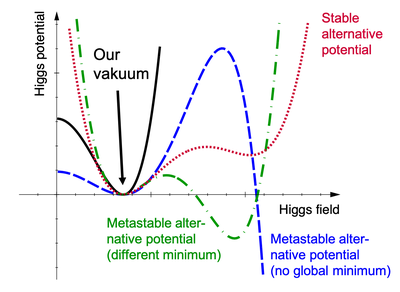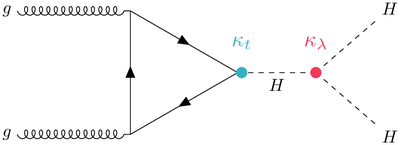What is the Higgs field, the Higgs mechanism, the Higgs boson?
The Higgs field is a scalar (spin-0) field that interacts with almost all standard model particles. The strength of this interaction determines the mass of the particle. One can imagine that the Higgs field is a viscous structure of nature that slows particles down (preventing them from travelling at the speed of light), effectively giving them a mass.
The reason why this Higgs mechanism works lies in the so-called “Mexican Hat potential” of the Higgs field. The ground state of the Higgs field is not at the centre of the potential but reaches its minimum at non-zero field values. As nature has to choose one of the lowest energy states, the potential is not symmetric with respect to that state (this is called spontaneous symmetry breaking).
The Higgs field and mechanism was discovered in 2012 through the observation of the excitation of the Higgs field, the so-called Higgs boson.


Left: A sketch of the Higgs potential: The ground state of nature (indicated by the smiley) is not at the origin of the potential. Right: Observation of the Higgs boson at a mass of about 125 GeV in its decay mode to two photons (γγ). Shown is the diphoton mass spectrum.
Why study Higgs pairs?
The knowledge of the shape of the Higgs potential is crucial to the understanding of nature. In the figure on the left, alternative potential shapes besides the Higgs potential predicted by the SM (black line) are shown. Several alternatives (in particular the green dot-dashed line and blue dashed line) might predict that our universe is metastable and will eventually transition into a different state (although in time scales much larger than the age of the universe).
In order to gain greater knowledge of the Higgs potential one needs to measure the self-coupling of the Higgs field: The potential predicts triple and quartic Higgs vertices. For example, the triple Higgs vertex will lead to the production of Higgs pairs in collision events (see right diagram).
This is why the measurement of Higgs pairs is important.


Finding Higgs pairs with four b-(anti)quark jets
The probability of the Higgs boson to decay into a certain type of particle is determined by the mass of this particle. The heavier a particle the more likely it is for the Higgs boson to decay into it. The most likely Higgs boson decay is into a b-quark–b-antiquark pair: we expect about one-third of Higgs pair events to decay into a four b-(anti)quark final state. This is why our group is looking for Higgs pairs in that final state.
This research activity received funds from 2019 to 2025 from the ERC for the "HiggsSelfCoupling" project (787331) led by Issever.
